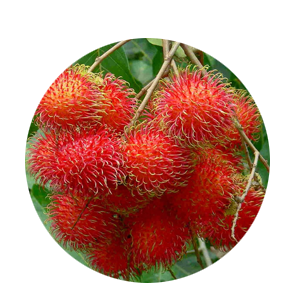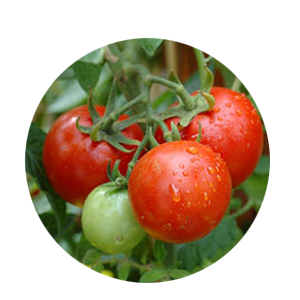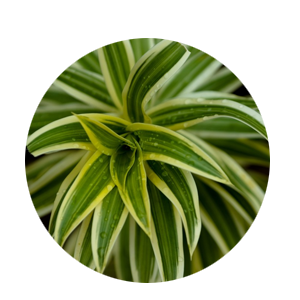Star Fruit - Graft - (8x10 bag)

Item Description
GENERAL INFORMATION ABOUT A STARFRUIT/CARAMBOLA Carambola or starfruit, is the fruit of Averrhoa carambola, a species of tree native to the Philippines, Indonesia, Malaysia, Vietnam, Nepal, India, Bangladesh, Sri Lanka, Mauritius and Seychelles. The fruit has distinctive ridges running down its sides (usually five but can sometimes vary); when cut in cross-section, it resembles a star, hence its name. The entire fruit is edible and is usually eaten out of hand. They may also be used in cooking and can be made into relishes, preserves, and juice drinks. The fruit is about 5 to 15 centimetres (2 to 6 inches) in length and is an oval shape. It usually has five prominent longitudinal ridges, but in rare instances it can have as few as four or as many as eight. In cross section, it resembles a star. The skin is thin, smooth, and waxy and turns a light to dark yellow when ripe. The flesh is translucent and light yellow to yellow in color. Each fruit can have 10 to 12 flat light brown seeds about 6 to 13 mm (0.25 to 0.5 in) in width and enclosed in gelatinous aril. Once removed from the fruit, they lose viability within a few days. The entire fruit is edible, including the slightly waxy skin. The flesh is crunchy, firm, and extremely juicy. They have a tart, sour undertone, and an oxalic acid odor. The taste is difficult to compare, but it has been compared to a mix of apple, pear, grape, and citrus family fruits. Unripe starfruits are firmer and sour, and taste like green apples. HELTH BENENIFTS OF STARFRUIT Starfruit is rich in antioxidants, potassium, and vitamin C; and low in sugar, sodium, and acid. It is also a potent source of both primary and secondary polyphenolic antioxidants.Averrhoa carambola has both antioxidant and antimicrobial activities. Scavenging of nitric oxide (NO) by the fruit extract is dependent on concentration and stage of ripening. Extracts showed antimicrobial activity against E. Here are some health benefits 1.Works on Immunity 2.Allays Inflammation 3.Anti-Cancer Fruit 4.Weight Loss program 5.Maintain Blood Pressure & Heart 6.Improves Iron Absorption 7.Aids Digestion 8.Boosts Milk Production in Women 9.For a Radiant Skin
Maintanance, Disease Management And Yielding
MAINTANACE OF THE PLANTATION Once a plantation has been established, the work should not be considered finished. It will be necessary, for example, to protect the plantation against weather, fire, insects and fungi, and animals. A variety of cultural treatments also may be required to meet the purpose of the plantation. FERTILIZING Young trees should receive 113 to 226 g of a mixed fertilizer containing nitrogen (N), phosphorus (P), potassium (K), and magnesium (Mg) every 30 to 60 days. As trees mature, the fertilizer rate should increase 0.45 to 2.3 kg with an application frequency of 4 to 6 times per year. Fertilizer mixtures containing 6-8% nitrogen, 2–4% available phosphoric acid, 6–8% potash and 3–4% magnesium are satisfactory. WATERING AND WEED CONTROL Young starfruit trees should be watered regularly until fully established. In dry western climates, water mature trees deeply at least every one or two weeks. Desert gardeners may have to water more frequently. Mulch the soil around the trees to conserve moisture. Weeding is also very important. Remove all weeds 1.5 meter around the plant. PRUNING AND SHAPE OF TREE During the first 1 to 2 years after planting, young trees should be pruned by tipping shoots in excess of 2 to 3 ft to increase branching. If desired, trees may be trained to a modified central leader or open center configuration. Mature trees may be selectively pruned to maintain trees at 6 to 12 ft (1.8 to 3.6 m) in height. Selectively removing a few upper limbs back to their origins (crotches) each year will help prevent the loss of the lower tree canopy due to shading by the upper canopy. In addition, maintaining a smaller tree facilitates tree care and fruit harvest, makes it easier to spray the tree, and greatly reduces possible storm damage. Do not remove lower tree branches. PEST & DISEASE FOR STARFRUIT TREES Every fruit tree has the future potential for disease and insect damage. Factors such as location and weather will play a part in which issues your tree encounters. If available, disease-resistant trees are the best option for easy care; and for all trees, proper maintenance (such as watering, fertilizing, pruning, spraying, weeding, and fall cleanup) can help keep most insects and diseases at bay. HARVESTING YOUR STARFRUIT Fruit best when ripened on the tree, but will ripen slowly if picked before fully ripe. Green or ripe fruits are easily damaged and must be handled with great care. Ripe carambolas are eaten out-of-hand, sliced and served in salads or used as a garnish. They are also cooked in puddings, tarts, stews and curries.
- Propogation Method : Grafting
- Plant Climate : Sub Tropical, Normal, Hot, Cool, Tropical
- Plant Height : 2-3 feet
- Plant Weight : 3.5kg
- Plant Polybagsize : 8x10
Related Images
- Botanical Name : Averrhoa Carambola
- Malayalam Name : Carambola
- English Name : Star Fruit
Sweet and tart flavored star fruit (carambola) is one of the delicious tropical fruits
Planting Instructions
PLANT THE RIGHT TREE AT RIGHT PLACE Growing space both above and below ground should be considered when selecting a tree to plant. Too often allowances are not made for the increased size of the tree when it matures. Most problems can be avoided by selecting the proper tree species for the available planting space. GENERAL TIPS 1. Plant at least 6 to 10 meter from main overhead utility wires on street or to your home. 2. Plant at least 7 meter from a building. 3. Plant at least 2 meter from sidewalks, driveways, patios and fences. 4. Plant at least 7 to 15 meter from other large trees. 5. Plant at least 7 meter from small trees. 6. Prioritize your tree planting with the sun’s direction to maximize shade by planting on the southwestern and western sides of your home BASIC PARAMETERS TO PLANT A STARFRUIT TREE 1. Soil : Carambola trees are well-adapted to many types of well-drained soils. Trees grow best where the soil reaction is moderately acid to neutral in pH (4.5 to 7). In calcareous and high-pH soils (above 7), special care is required to prevent minor element deficiencies, particularly iron, manganese, and zinc (see Fertilizer section). 2. Planting Distance : For Commercial Plantation:-Carambola trees in the home landscape should be planted 20 to 30 feet or more (7.6 to 9.1 m) away from buildings and other trees. Trees planted too close to other trees or structures may not grow normally or produce much fruit due to shading. For Home Garden: -In a home garden generally we are planting one or two starfruit trees along with other species of fruit plants. So it is better to keep minimum 7 meter distance from other plants to plant a starfruit tree. 3. Pit size : Minimum 60cm width X 60cm Breadth X 60cm depth 4. Sunlight : 100% sunlight is best but can grow up to 50 % shade 5. Watering: During dry weather, initially water the plant once in two days and after one month of planting water every 7 to 10 days during the first year. TEN TIPS FOR PLANTING A STARFRUIT TREE 1. Dig a hole/pit 3 to 4 times wider than the container (Normally 60cm X 60cm X60cm is recommended). Fill the pit with top fertile soil to allow for proper root growth. Avoid clay type soil to refill the pit. 2. Add 250 gm Rock Phosphate or Born Meal and 3 to 5 kg Cow dung or compost in the top soil of the pit and mix it thoroughly (Thorough mixing of manure with soil is very important because direct contact of manure with the roots of the plant will cause the damage of roots and plant). 3. Make a small hole in the pit and carefully remove the plant from the container/pot or poly bag keeping the soil around the roots intact. Don‘t yank the plant out of the pot or poly bag as this can separate the roots from the tree. Poly bags can be easily removed by cutting it by a knife and pots can be removed easily by hitting slightly at the top edge of the pot. 4. Set the plant in the middle of the hole. Avoid planting the tree too deep. Keep the base of the trunk is slightly above ground level. Using some soil, secure the tree in a straight position, then fill and firmly pack the hole with the original soil, making sure there aren‘t any air pockets. 5. If the plant is Grafted or Budded make sure the grafted or budded portion of the plant is above the soil. Do not allow to touch the grafted or budded portion in the soil as it burns the skin of the plant. 6. Create a water-holding basin around the pit and give the plant a good watering. After the water has soaked in, spread protective mulch 2–4 inches deep in a 3-foot diameter area around the base of the tree, but not touching the trunk. Also provide a stich as a support for the plant, if needed. 7. The soil and mulch around your plant should be kept moist but not soggy. During dry weather, initially water the plant once in two days and after one month of planting water every 7 to 10 days during the first year. 8. Remove any tags and labels from the tree as these will affect the tree as it grows. You may need to prune any broken or dead branches. For Budded or Grafted plants it is very important that do not allow the growth of off shoots under the grafted/budded portion. Allow the growth of budded/grafted scions only. 9. Do not use chemical fertilizer or any other chemicals on your newly planted trees. Such products will kill your young trees. If needed you can add chemical fertilizers in small quantity (generally below 100gm) after two to three months of planting with sufficient irrigation. 10. Do not over water or allow rain water so much that you see standing water in the pit area of the plant. It will damage the plants roots and results the die of your plant.











